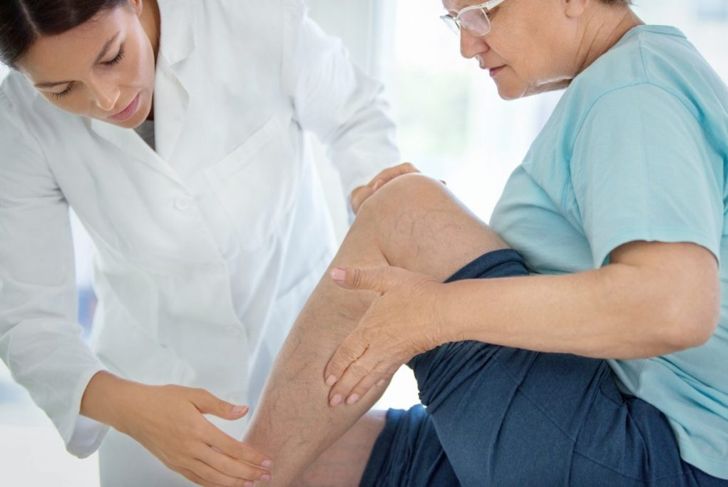Repetitive motion injuries affect a broad range of people and are the most common workplace injury reported in the United States. Whether you work in an office or on a construction site, you may be at risk; people who partake in many sports or exercise are also commonly affected. Despite the frequency of such injuries, many people don’t understand them very well. Understanding how a repetitive motion injury or repetitive strain injury may occur can help you assess your risk and take steps to prevent them.
What is a repetitive motion injury?
When most people think of what causes injury, they think of a fall or other sudden event. However, the small strain of doing the same action over and over again can build up over time, leading to pain and tissue damage. This is a repetitive motion injury. Something as simple as typing on a keyboard all day can cause an injury. Repeated concussions can also cause problems. A jogger may develop a repetitive motion injury from the force of their feet hitting the ground with every step.
Are there different types of repetitive motion injuries?
Repetitive motion injuries come in a few forms. The most common are tendinitis and bursitis. Tendinitis is the inflammation of the tendons, which are the tissues that let you move and flex your body parts. Bursitis refers to the inflammation of the bursae, little sacs of fluid that help your joints stay lubricated and move smoothly. When these tissues become swollen and damaged, it becomes difficult and painful to make the simplest movements. Many repetitive motion injuries have common names based on their location or the most common cause, such as “tennis elbow” for tendinitis in the elbow.
Can repetitive motion injuries be prevented?
The good news is that most repetitive motion injuries are preventable. Many are caused by bad posture or form. Setting up an ergonomic workstation can make a positive difference. People who work in offices should try to take frequent breaks throughout the day. For some activities, such as warehouse or construction work that requires heavy lifting, back supports and other assistive gear can help reduce strain. It is always best to work mindfully and carefully, and avoid rushing to get things done.
How are repetitive motion injuries treated?
The treatment for repetitive motion injuries varies depending on severity, type, and location. Your doctor may begin by prescribing pain or anti-inflammatory medication to help relieve the symptoms. You may be given a brace or bandage to wear over the affected joint, to support and immobilize it. After that, physical therapy can help strengthen the surrounding muscles and reduce strain on the joint. Occupational therapy can help you learn to work more safely. Massage and chiropractic care may also help some situations. In severe cases, surgery may be necessary.
Who is at risk of repetitive motion injuries?
Almost everyone is at risk of repetitive motion injuries, especially if you spend all day at a computer. However, some people are more susceptible than others. If you tend to slouch, you’re at higher risk of injury. Some medical conditions, such as diabetes or arthritis, can also increase the likelihood of developing a repetitive motion injury. People with obesity or those who are not physically active face increased risk. Lack of sleep and excessive stress also seem to play a role.
What are the symptoms of repetitive motion injuries?
The signs of a repetitive motion injury may be subtle at first. You may feel a little more aware of a certain body part, or feel some vague discomfort. If you don’t take action, that feeling may progress to actual pain. Numbness and tingling are also common symptoms. The affected body part may feel weak and uncoordinated. For example, people with carpal tunnel syndrome often have trouble holding or gripping items. Some people also report hypersensitivity in the affected area.
When should you see a doctor?
If you suspect a repetitive motion injury, it’s best to see a doctor as soon as possible. By the time you feel the first symptoms, significant damage may have already occurred. In rare cases, a repetitive motion injury can cause the joint to become infected. If you experience fever, chills, or nausea accompanying the joint pain, seek immediate medical attention.
What kind of doctors treat repetitive motion injuries?
Most doctors or physician assistants can handle basic treatment for a repetitive motion injury, so your family doctor is a good place to start More severe injuries may require a specialist. Your family doctor can refer you to an orthopedic or sports medicine doctor. In some cases, you may need to see an orthopedic surgeon. If you’re experiencing nerve pain, a neurologist may get involved. In addition to doctors, your treatment may involve physical therapists, occupational therapists, vocational health specialists, and other providers.
How long do repetitive motion injuries take to heal?
The time it takes for your repetitive motion injury to heal depends on how severe it is and what kind of treatment you seek. In general, healing will take some time. If you catch the symptoms quickly and follow your treatment plan, your symptoms may go away within a matter of weeks. If you try to work through the pain and cause significant damage, however, it may take years to recover fully. In severe cases, people experience chronic symptoms and flare-ups for the rest of their lives.
How serious are repetitive motion injuries?
The severity of a repetitive motion injury depends on many factors, but the primary one is how long you let it go on without treatment. The damage caused by repetitive strain is cumulative, so it can build up over time even if your symptoms are mild. Repetitive motion injuries can severely impact your everyday life, making it difficult to perform basic tasks like cooking, brushing your teeth, or getting dressed. The pain can be so bad it affects your mood and sleep. Take even the most minor symptoms of a repetitive motion injury seriously to minimize longterm effects.

 Home
Home Health
Health Diet & Nutrition
Diet & Nutrition Living Well
Living Well More
More




















